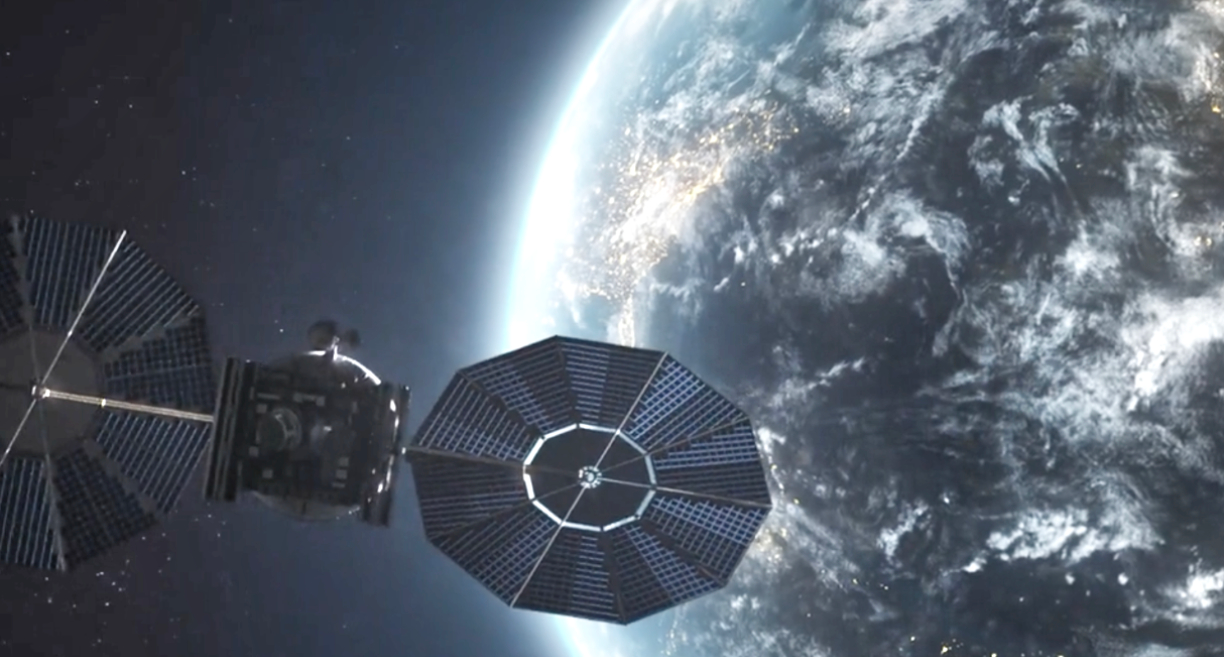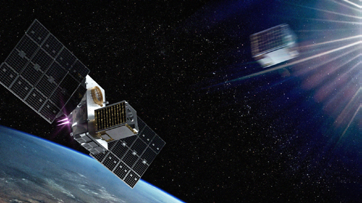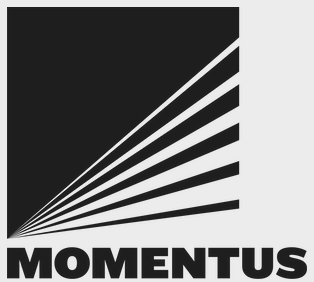John Rood, former U.S. Under Secretary of Defense for Policy, is the Chief Executive Officer of Momentus . He brings more than three decades of public and private sector experience to the company, including more than 20 years of service to the U.S. Government at the Department of Defense, Department of State, White House National Security Council, Central Intelligence Agency, and as a U.S. Senate staff member.

Prior to his public service, Rood was Senior Vice President of Lockheed Martin International where he led international business growth. He also served as Vice President for Corporate Domestic Business Development at Lockheed Martin. Before joining Lockheed Martin, he was a Vice President at the Raytheon Company.
What is the primary space infrastructure challenge that needs to be addressed in the next five years?

John C. Rood
John Rood
In the early days of spaceflight, mission designers were true pioneers. Infrastructure — launch complexes, communications networks, and so on — was limited to what had been built on the ground. While there has been some migration of support infrastructure to space, this migration is still in its infancy and most space missions are fully self-reliant once in space.
As space activity expands, we are approaching a critical mass of activity where providing common functions as a service becomes practical and cost- effective. The first two areas where this tipping point is being met are in-space transportation and data transport.
Looking at Space Transportation, the increasing number and growing capabilities of smallsats, combined with the inherent economies of scale of large launch vehicles, have created a rideshare launch economy. Many smallsats are aggregated onto, and share the cost of, an efficient, large rocket launch to get to space. This is analogous to large container ships crossing oceans or rail transport of goods on land.
However, once in space, the satellite cargo may need to be distributed further — to various mission-optimal orbits. As the rocket can only drop cargo off in one place, the need for an in-space transportation system is emerging.
This challenge is being met by a combination of in-space transport tugs and a large number of emerging smallsat propulsion technologies that allow these smaller spacecraft to move themselves to their optimal orbit destination.
This last-mile delivery service is a foundational enabler for various missions, including Earth observation, communications, Internet of Things (IoT ), and missions performed by the Department of Defense, such as space situational awareness (SSA).
Data transport is the second near-term challenge. Part of the increase in satellite activity is being driven by constellations of Earth Observation (EO) satellites. Miniaturization of sensors and electronics, combined with advances in artificial intelligence (AI), has created a market for near real-time EO data products. This
has resulted in a huge increase in the amount of space data being gathered and a demand that this data be downlinked to the ground quickly to serve low-latency data consumers.
This poses several challenges to the constellation operator. One is that downlinking data requires a license for RF spectrum to be obtained — and more data means the operator needs more frequencies assigned to them. Plus, RF spectrum is a limited resource.
The second problem is that the satellite can only downlink data when over a ground station. LEO satellites don’t see much of the Earth at once, so a constellation of LEO satellites needs a global network of ground sites.
A traditional approach where each mission builds out its own global ground network and requires allocation of enough RF spectrum to cover its peak needs is expensive. As this approach is scaled – with many parallel and independent systems, it’s clear that a centralized infrastructure solution is more efficient.
System elements, which must be sized for coverage (vs. utilization), can then be driven at higher utilization by sharing the resource over multiple different users, each paying a fraction of the total system cost.

What is the value proposition of space infrastructure and are customers finding value in non-traditional ways of operating?
John Rood
Momentus is currently focusing on the physical, in-space transport infrastructure need. We provide a similar service to an air carrier. The customer tells us when they want to fly — and to where — and we figure out how to get them there. Today, there are few rideshare rocket launches to choose from, so most of the customized orbit work is done by our in-space transport vehicles.
As the number of rideshare rocket launches increases, we can leverage the increased flexibility in the first leg of the ride to provide a better quality of service to our customers... more flexibility in launch dates and reduced transit times. Since Momentus contracts with the launch vehicle providers directly, we offera simple turnkey transportation service to our customers —– taking care of the technical work of launch integration and mission management, as well as assisting with obtaining the necessary government licenses.
Momentus also offers a hosted payload service — sometimes referred to as Satellite as a Service or SaaS. Startup space companies and university researchers are often initially focused on specific technologies that enable a particular mission.
To retire risk associated with new tech and business models, it’s useful for them to flight demonstrate their technologies and ideas. With a traditional approach, this means they then need to contract with vendors to supply all the various mission-agnostic elements: a spacecraft bus (with all its complicated subsystems), a launch to space, a ground network, etc. This adds cost, complexity and time to the demonstration, and in many cases, may make such an impractical option.
Momentus’ transport vehicles can perform the role of the support bus for these payloads and as we’re already handling the launch service and ground network elements to support our transport mission, our customers can focus on their payload operations. This is all offered as a bundled service, so technology innovators only need to worry about their tech and we handle everything else.
This makes a flight demonstration a practical option for startup space businesses and space technology businesses. By flying their tech in space, they reduce risk, allowing them to attract additional investment more easily or customer commitments for their products and services.
As Momentus and other companies grow these sorts of services, it is likely that interface standards (APIs) emerge to further support the SaaS business model and provide even greater convenience to space mission operators.
What is the role of sustainability in space infrastructure?
John Rood
Space missions tend to be quite expensive. However, that’s not unique to infrastructure projects. Most terrestrial infrastructure projects are also big, complicated, and expensive. For example, the new San Francisco-Oakland Bay Bridge cost about $6 billion. The James Webb Space Telescope cost about $10 billion. A bit more, but certainly on the same scale.
The big difference is that the Bay Bridge is expected to have an operational lifetime of 100 years or more. The James Webb Telescope, which required 30 years to design and build, is designed for an operational life of only 5-½ years. Engineers hope that it may last as long as 10.
This is an extreme example, but commercial GEO Spacecraft cost hundreds of millions to billions of dollars to produce and last perhaps 15 to 20 years, after which they must be replaced to provide continuity of service. Space operates as a disposable economy, but with the capital costs consistent with large infrastructure projects.
The approach we are taking to space today is not sustainable. However, the increase in space activity that’s creating opportunities for in-space transportation and data transport also creates an opportunity for a sustainable approach to space.
With large numbers of space vehicles in close, relative proximity, business cases for satellite servicing and orbital removal begin to close. With further evolution of technologies, in-space manufacturing, servicing and recycling are likely to follow. These capabilities will allow space infrastructure to become maintainable — extending the useful life of systems to 50 years or longer, approaching the lifecycle of terrestrial infrastructure. In turn, lifecycle costs will decrease, and space-based businesses will grow.
Maintenance, manufacturing and debris removal all require transport logistics. This will further leverage the capabilities of in-space transport systems and also creates a need for in-space refueling. It’s not practical for a transportation system to carry a lifetime of fuel with it from the start (though that’s how space missions operate today).
Initially, refueling supplies will likely be launched to orbit and the in-space transport vehicle will rendezvous with the launch system to transfer fuel to itself. As activity increases, propellant delivery services will emerge, and eventually a network of fuel depots will emerge as the most efficient means of supporting in-space transportation logistics.
As the overall support infrastructure in space develops, particularly in-space manufacturing, recycling and maintenance, dependence on the Earth for space activities will decrease, allowing for more economical activities far from Earth. Sourcing of more local raw materials for manufacturing will emerge, along with technologies that are supported by available off-Earth resources.
This extends to propulsion systems as well. Water will likely emerge as a primary off-Earth propellant source due to its relative abundance throughout the solar system. Propulsion approaches that leverage off-Earth propellants will be needed to avoid the logistical costs associated with Earth-sourced fuel.
Where is Momentus on the path of offering some of these services?
John Rood
Momentus is currently offering launch and in-space transportation services as well as Satellite as a Service (or hosted payloads) to its customers.
We’ve embraced water as a propellant, which speaks to our interest in sustainability, and we think it will also provide efficiency advantages by addressing a niche need between electric and chemical propulsion.
We also believe it will give us a better operating cost and broader capabilities over time. While the idea of water as a propellant has been discussed in academia for decades, we’re pioneers in developing it for commercial applications. In addition to using water as a propellant, we’ll look to bring online reusable versions of our orbital transfer vehicle in the future.
We are also watching the space economy evolve and looking for the right time to introduce other infrastructure services — or partner with others to best serve our customers.

We flew the inaugural mission of our Vigoride orbital transfer vehicle in May of this year. We conducted a comprehensive ground test campaign before
that flight, but there is no substitute for getting your hardware in space. We’ve deployed seven of the nine customer satellites onboard Vigoride. We learned a lot from that mission and are applying what we learned to our upcoming manifest.
Our next mission is targeted for December of this year. As part of this mission, we’re supporting a complex hosted payload and we’re looking forward to comprehensively testing this offering in space and continuing to improve performance for our SaaS customers.
I’m proud of the team we’ve built — respected and trusted aerospace professionals who decided to join the Momentus mission because they saw as much potential in its future as do I. We have a great team that is committed and busy building the capabilities to transform how we operate in space.
Our vision is to provide the backbone infrastructure services that empower companies, organizations and explorers to optimize their use of space. We’re excited to see what missions become possible and what discoveries are made as we more reliably open access to space and provide the transportation and support needed to go beyond standard orbits.
momentus.space

